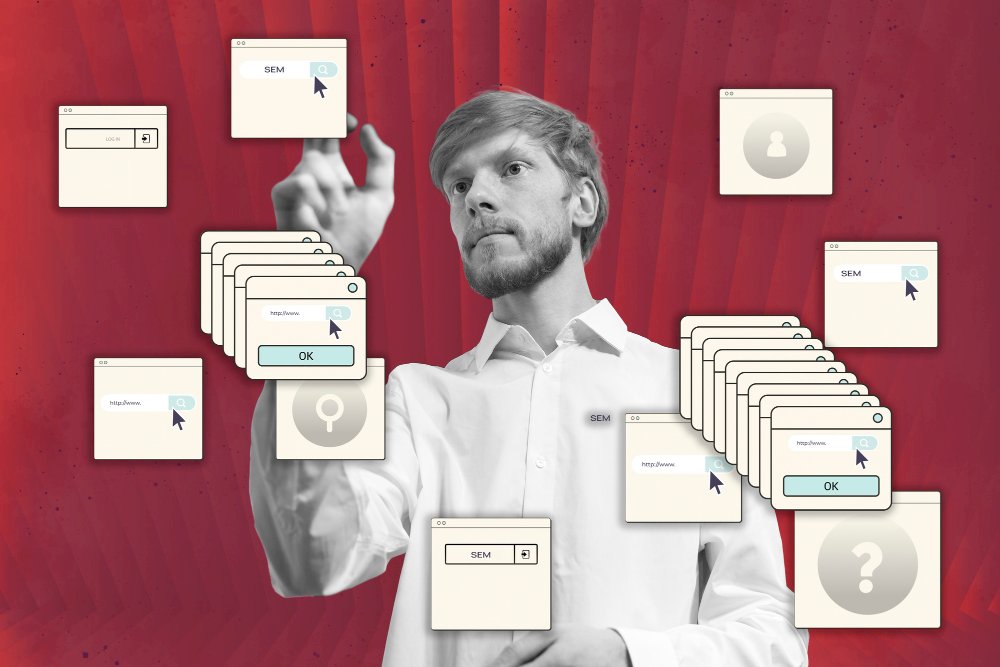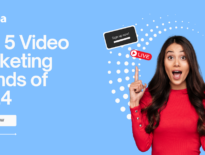Employee-Generated Content (EGC) consists of blogs, photos, videos, and other forms of content that employees create and distribute. This type of content conveys a level of authenticity that can create a more engaged workplace for remote or hybrid teams. It’s a powerful tool for companies wanting to strengthen team bonds and cultivate a culture of collaboration. It also gives marketing teams a way to boost public perception of a brand.

The power of employee-generated content
Employee-generated content is more relatable than brand-generated content. It is seen as being more authentic than the content created by HR departments or marketing departments. When employees can share their ideas and perspectives, they feel more invested in the company and its success.
- With the rise of remote work, employees want to see the human side of a company. EGC can help to fill a void when colleagues are no longer working in a shared office space.
- Employees who see other employees sharing content are encouraged to do the same. This encourages knowledge sharing where employees can learn from the expertise and experience of others. Creating and sharing content sparks discussions and encourages engagement.
- EGC can break down barriers between departments and improve communication. This helps to promote a stronger company culture and better workflows.
- EGC provides a cost-effective way to populate social feeds and can give prospective candidates more insight into a brand. Others are more likely to want to work for a company that trusts employees to share their experiences.
- Marketing teams can use EGC on social media to create brand awareness and build positive perceptions.
Fostering a culture of story-telling
How do employers begin to incorporate EGC into their existing communication frameworks? Various strategies and best practices help to create an environment that promotes the creation of this type of content. Companies need to find ways to encourage experts within the company to produce content.
- Companies must establish clear guidelines and define the purpose and goals of EGC. For example, the shared content must fit the brand image.
- It is important to roll out the concept of EGC gradually. Identify a small group of employees who are already involved on social media. Look for those who have qualities that align with the company’s vision and values. Enthusiastic, passionate individuals can set the tone for others.
- Some employees won’t be interested in participating. Leaders should never force them to do so. They should rather encourage those who are interested.
- Employees may be unsure about what they can share. It’s important to hold training sessions for interested employees to clue them in on best practices. They can receive guidance on what to do and what not to do on social media. Offer them a range of good examples to inspire them. Share the type of knowledge that helps to reduce fear and creates an encouraging environment for sharing.
- Launching a recognition program can help to encourage employees to create content. A team leader could thank a team member on a group call and send a link to a video for marketing he created to attendees. Badges and peer-to-peer recognition are some common ways to recognize employees.

Tools and platforms for employee-generated content
Using the right video platform and tools can streamline the process of creating and distributing EGC. All employees should know what options are available to them in terms of platforms and tools they can use.
1. User-friendly tools for employee video content creation
Companies need user-friendly tools for creating employee video content. They should be able to create quality employee video content in a simple, yet effective way.
Cincopa is a leading video platform that offers video messaging. This is an easy-to-use screen recorder for Chrome. It offers the option of doing talking-head videos, screen recordings, or both at the same time. This is available with a single click from the Chrome browser.
Users can upload the video to the Cincopa video platform and share it publicly or privately. Those who aren’t Cincopa users will get a feed with a sharing page and a link. They can share a video with anyone via the direct link.
2. Internal communication channels
Internal communication channels allow employees to share content with one another. A sound internal communication strategy helps to enhance employee collaboration, training, and much more. A lack of internal communication usually means employees are not able to reach their full potential.
- Experienced employees can share video tutorials about specific tools or processes relevant to a job. These videos can become part of an internal knowledge base that other employees can access.
- A culture of continuous learning helps to break down barriers between departments. Employees exchange ideas, seek advice, and ask questions.
- Creating specific internal communication channels for a special audience or topic ensures relevant information is available to employees when they need it. For example, a workflow created by an account manager could become a template for many other employees to use. A sales manager could create a video for sales that inspires the whole sales team. These types of videos can be very effective.
- An internal employee video portal can act as a gateway to a whole organization. Employees can access a safe online internal employee video portal where they can find helpful content. This may be a video course they can participate in or a message from the CEO.
- Personalized messaging can help employees to stay updated with the latest company information. Companies can broadcast examples of employees displaying company values on an internal video portal.
- Internal communication channels allow employees to learn more about what colleagues in other departments and even other countries do. On-video features such as subtitles and captions enable even employees who speak another language to understand videos. This helps to create a strong sense of community and builds the company culture.
CincoTube from Cincopa allows for the easy creation of internal communication channels. Owners can create channels and add content. They can invite users and set roles. Admin has various functions such as adding or removing video assets from a channel. Contributors can add content and remove it. Viewers can view videos but don’t have any other access.
Private and public channels: Hosting video assets on private channels means employees can easily find the videos they need in a safe, organized location. Team leaders can add team members to a video portal. User permissions allow them to give employees access to what they need to fulfill their roles and no more.
Public channels allow unregistered users to view content. EGC content on public channels, such as a video for marketing purposes, can reach a wide audience.
Having a variety of channels for internal and external communication is very useful for employees. If they want to improve their ability to make a video for sales, they can access a tutorial. If they want to improve their presentation skills, a video to help with this should be easy to find.
Personalization and customization: When videos are interactive and personalized they drive more employee engagement. It is easy to share personalized videos on CincoTube. Personalized messaging means employees retain more information. A customized video player with brand messaging helps to promote a brand image.
On-video features: Annotations can help to engage employees. Subtitles, video chaptering, quizzes, surveys, and annotations are just some of the features employees can use in CincoTube. Quizzes can help new employees with message retention. They can identify gaps in knowledge and watch videos to fill in these gaps. Surveys provide employees with ways to give feedback.
Live streams and video-on-demand: Employees can benefit from live streams and video-on-demand. For example, regular live streams from a CEO can help to keep employees connected to company goals. Sharing information about a new deal with employees can make them feel involved.
Advanced security features and analytics: On CincoTube users have access to advanced security features and analytics. This enables them to keep confidential company information secure and get insights that help to drive better decisions.
3. Sharing of EGC on social media platforms
Sharing EGC on social media platforms expands the reach of non-confidential information and can enhance the public image of a brand. EGC on social media gets more shares and followers than many other types of content.
- The stories featured on Instagram are a great way to share authentic EGC. Candidates will pick up on content that gives them clues about the company culture of a prospective employer. It’s a great way to keep current and future candidates interested in a brand. For example, a new hire may post an Instagram Story about the first day on the job and how welcoming other employees were.
- Personalized videos that employees create for LinkedIn can help to drive traffic to a career site. Candidates are accustomed to looking for career content on this platform.
- A Facebook post sharing an employee’s excitement about receiving a new work laptop or other equipment will help to build a brand reputation.
- Companies can make a compilation video for marketing purposes from content that employees post. A video showing working at home with kids and healthy lifestyle highlights can go over very well on social media.
- Creating a company hashtag to share EGC makes it easy to track. It is easy to know what content is being created. It can also build a sense of camaraderie among employees.
- A B2B company shouldn’t underestimate the potential of EGC content. Highly engaged employees can create valuable content the company can deploy on a B2B video platform. Using a B2B video platform can help to humanize the brand as video is often the best way to do this.
Different types of employee-generated content may include social media posts, blog posts, photos, reviews, articles, case studies, and recruitment videos. Internal training videos and recruitment videos are very useful types of EGC.

Employee-generated content in real-life
Employee-generated content plays an important role in internal communications, talent acquisition, brand building, and more.
- Geo social media lead at IBM, Nadia Alkutbi, posted a TikTok video of her experience at a company event. The amount of engagement and shares it received shows just how effective this type of video can be. Sharing videos of company events or team outings puts a spotlight on company culture.
- SAP tech influencers use their subject matter expertise to create content on LinkedIn. Two employees have attracted a significant following by creating content about SAP’s products and services. This has helped to solidify SAP’s influence as a thought leader in the industry. Content of this type builds the credibility of a brand.
- Cisco, one of the largest technology companies in the world, uses EGC in its campaigns. It uses the hashtag #WeAreCisco internally and externally to help promote the company culture and attract top talent. Its @WeAreCisco channels allow existing employees to tell unique stories that can inspire prospective employees. The company’s campaign results prove how effective strategies like this can be.
- Flipping the Barrel is a podcast series hosted by two women who work at SLB and Baker Hughes. They highlight the perspective of women in the oil and gas industry. These women have created a community that pools insights from the oil and gas industry and highlights a woman’s perspective. This demonstrates how EGC can help companies to showcase diversity and inclusion.
Conclusion
Employee-generated content provides a powerful way to promote a brand image, attract top talent, and build a company culture. Instead of a brand talking about how great it is, EGC allows employees to act as brand ambassadors. They can share about the work culture, products, and brand values with peers and followers. Employee engagement and retention improve when they know they are part of a team with shared goals.
Cincopa’s CincoTube provides an efficient way for enterprises to implement internal communication channels and establish a community among teams. Teams can also share EGC through public channels.











